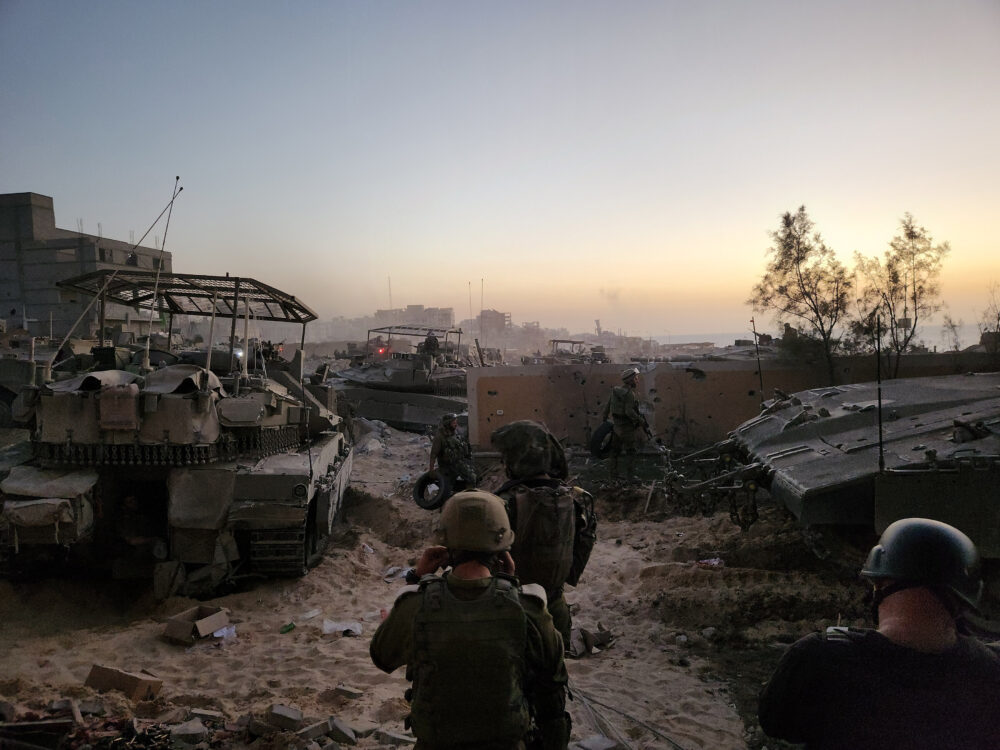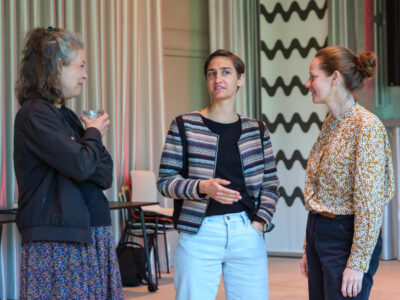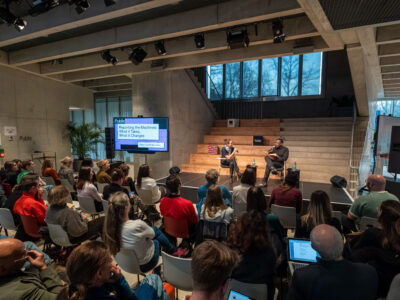War reporting: Can we still have an impact?
War reporting is by far the most dangerous work there is for journalists. But what can it still achieve? The role played by social media in the wars in Ukraine and the Middle East is putting journalism to a serious test.

By Gabriele Riedle
About the Author: The writer and reporter Gabriele Riedle (*1958) has reported from Libya, Liberia, Afghanistan and elsewhere for the magazine Geo and taught the history of war reporting as a guest professor at the University of Virginia in Charlottesville. Her book “In Dschungeln. In Wüsten. Im Krieg” (“In Jungles. In Deserts. In War.”), a novel about the daily lives of war reporters, was published in 2022 by a curated imprint of the Aufbau Verlag publishing house in Berlin and was nominated for the German Book Prize.
Nobody knows the precise numbers, but in Ukraine alone, there must be thousands of them from around the world, and who knows how many people are currently making their living as journalists in the conflict regions of the Middle East. They are there to write, photograph and film – to report on everything they see, hear and experience in these wars. And it is safe to assume that each and every one of them is in constant danger.
Over and over again, reporters have found themselves the focus of targeted attacks. According to Reporters Without Borders, there have been more than 100 of them in Ukraine since the beginning of the Russian invasion in February 2022. Israel, meanwhile, recently refused to guarantee that reporters from Reuters and AFP would not be targeted by attacks in Gaza – and currently, at least one media professional is dying in that conflict each day.
Beyond targeted attacks, though, it is simply enough to be in the wrong place at the wrong time during bombings, airstrikes, firefights or any other similar incident in the notorious chaos of war. Nothing and nobody in the world can help in such situations – no editor-in-chief in her heated office, no entry in the German Foreign Ministry’s crisis prevention list, no UN commando and no life insurance policy for dangerous occupations. Even the helmets and bullet-proof vests that reporters sometimes wear on television are largely symbolic. They may protect the head and torso from bullet wounds, but they provide little protection from missile fire and explosions. Not to mention the fact that Israel is currently not allowing reporters to bring in such equipment because of their potential military use. Beyond that, nobody who is, for example, reporting on the effects of war on civilians – who are also without protection and who may have lost everything and fled the violence with only the clothes on their backs – wants to interview them while wearing a combat helmet and protective equipment.
The motives of those who nevertheless take these incalculable risks – frequently joined, it should be pointed out, by translators and stringers (local assistants) – could hardly be more different. Some are convinced that their images and reports will galvanise the public at large and thus contribute to a more peaceful world. Or there are those who, once they return home, pose as heroes who went to war as warriors in the name of truth. And, of course, there are always a few inexperienced thrill-seekers who endanger others but who are nevertheless able to find publications irresponsible enough to buy their stories.
Most, though, simply try to report what they can in a reliable and, these days, almost old-fashioned seeming manner. Precisely because they know that theirs is a vanishing craft.
In 1972, Vietnamese-American photographer Nick Ut published a photo of the “napalm girl” Kim Phúc, who was immortalised by his camera as she ran down a village road injured, naked and screaming following an attack by the South Vietnamese armed forces. With that image, he helped create a worldwide awareness of the horrors of this war – and to bring about an end to U.S. support for South Vietnam the following year. Since then, though, the power of images and reports produced by journalists seems to have eroded irretrievably.
But what power do their images hold in comparison to the gory, voyeuristic material that Hamas disseminated from their Oct. 7 attacks? How can media reports hold up against the propaganda battles that various actors wage with vast armies of professionals and the most modern means at their disposal? How impactful are carefully reported journalistic stories when weighed against the thousands and thousands of posts on social media channels, where everybody can make whatever claim they wish and where shared reality and objective truth appear to have been lost long ago? Even the dead from Bucha and the Israeli children massacred by Hamas can be swiftly reinterpreted as attention-grabbing stunts involving actors. Long, though almost certainly incomplete, lists of propaganda and fake news about the two conflicts have been compiled by Wikipedia on pages called “Disinformation in the Russian invasion of Ukraine“ and “Misinformation in the 2023 Israel-Hamas war.”
All that would be challenging enough. But then it emerged that a warlord like Putin, even well after Russia’s aggression against Ukraine began in 2014, was apparently able to buy at least one important Western journalist; and more recently, a freelance photographer who has worked for CNN and the New York Times accepted kisses on the cheek from a Hamas leader. Not to mention all that might come to light after this newsletter is sent. Because in the meantime, we have begun to constantly expect any possible eventuality. In journalism’s difficult daily battle for credibility, such reports aren’t exactly helpful.
Taken as a whole, it is enough to make you despair. And yet: We can’t just give up! We have to continue trying – even under the most adverse conditions – to do what journalism must do: report.
Picture: © Ronen Bergman/The New York Times/Redux/laif

